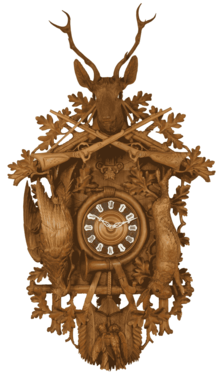Rhine is one of the most, if not the most, important river in Europe, both historically and currently. Throughout history the river have had a central role in expanding trade far into Germanys inland. The importance and role that the Rhine has played in the German history should not be underestimated. The 1,230 km long river (2nd largest in Europe) creates a natural transportation route and border between countries. It has helped Germanys development, especially during the
industrial revolution. The Rhine has also had a special role in most of the conflict in the region, especially in the earlier French-German conflicts. During WWII the river was a great obstacle during the Allied invasion, which led to many heavy battles taking place at its shores, one of the most famous ones being
Operation Market Garden.
The river flows from the alps in Schweiz and ends up in the North See in the Netherlands, with the longest part of the river flowing through Germany. The river can be divided into 7 parts, with the main parts being High-, Over-, Middle- and Lower Rhine.
Middle Rhine (in German: Mittlerhein), marked in yellow, is considered to be the most beautiful part of Rhine. This part of the river is surrounded by beautiful valleys and nature. Rheins large influence in German history is also exposed in Middle Rhein. Here one can see castles and fortifications at almost every corner of the river.
With me living just some kilometers from this part of the river, made it an obvious target for traveling for me. Me and some friends rented a car and went from Cologne (Köln on German) through Bonn, the formal capital of West Germany, Koblenz and we ended up in a small town named Bacharach.
 |
To the left: the stretch of Rhein with Middle Rhine in yellow.
To the right: The route of my trip, starting in Cologne, passing Bonn, Koblenz and ending up in Bacharach. |
Bonn
 |
| Bonn, a small city and formal capital of West Germany. It is also home to HARIBO, which gets its name from HAns RIegel BOnn (founder) |
 |
| Bonn, Beethovens birthplace (1770) |
 |
| The University of Bonn, persons as Karl Marx, Nietzsche, Goebbels and Hertz have studied and worked here. |
Koblenz and Rheins
 |
| Koblenz, second stop of the trip. Here another important river of Germany, the Mosel connects with the great Rhine. One of Germanys most important monuments, Deutsches Eck (German Corner), stands where they flow into eachother. |
 |
| Deutsches Eck, reinstalled 1993 as a reminder of German unity. |
 |
| We stayed over in a cosy little town named Rheins. |
 |
| Me having an hectic phonecall in one of Rheins telephone boots. |
Marksburg Castle
 |
| Marksburg Castle is almost 900 years old (!) and on of the few non-destroyed castles by Rhine. It was also one of few castles open during autumn (tourist low season). |
 |
| Me, very happy at this castle. |
 |
| The only way to enter is with a tour guide, which did not cost more than 5€, totally worth it. |
 |
| Inside the castle. Amazingly some people still calls this castle their home! |
 |
| "We stayed over there!"- Me pointing out where Rheins is. |
The Loreley
 |
| The Loreley, is a famous rock located in one of Rhines narrowest turns, which has lead to many sailors dying there. This has led to the famous folklore about a beautiful, singing Lady distracting the sailors and making them to either crash into the rocks or into other ships. |
 |
| One can visit the platform at the top displays an amazing view over Rhine. |
 |
| Notice the traffic lights for the ships by the road? This light lets the sailors know if any other ship is in the curve as they approach it, inorder to avoid accidents. |
 |
At Loreley I found these two statues, which are from the South Korean island, Jeju. They displaying the friendship between the two locations. As I have earlier been on Jeju, it was a small surprise for me to see these.
Bacharach and the way there
|
 |
| There are many cheap ferry-crossings over the Rhine. The city of St Goar, famous for its display of cuckoo-clocks and castleruin lies a stone throws away from Loreley. German cuckoo-clocks are built in south west of Germany but are very popular here, picture below, they were therefore found throughout the whole town. |
 |
| We saw many castles of the way. This is one of the unique ones, as it is built on a small island in the middle of the Rhine. These types of castles was mainly built to collect tax from passing ships. |
 |
| Bacharach, also one example of a beautiful cozy German city by Rhine. It is at least 1,000 years old and still have parts of is wall and castle left. |
 |
| Bacharach downtown. Our last stop. |
 |
| Entrance in city wall. |
 |
| On the wall. |

























